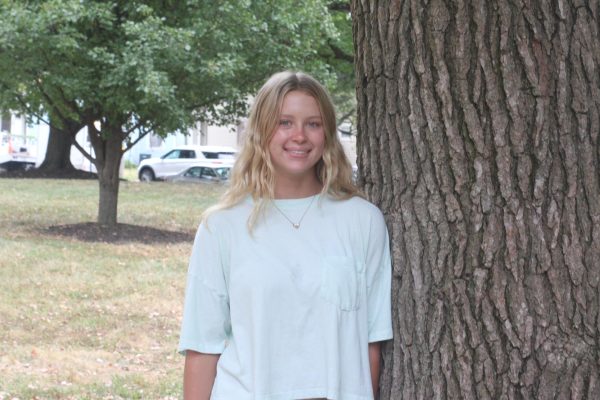Traveling Again
The request sheet for AIP is back and students are now able to travel to other classrooms
One of the changes between first and second semester is that the request sheet for AIP (academic intervention period) is now being used again by teachers to allow students to visit for extra help or test retakes in-person or on Zoom. Those in charge of the spreadsheet, including science teacher Andy Russell, believe traveling during AIP with the protocols in place and transmission rates being very low is worth the small risk in order for struggling students to meet with teachers.
“The only reason we didn’t use it at the beginning of the year to start with was just trying to keep social distancing and the more people you have moving around the more chance of transmission,” said Russell.
First semester, students had to Zoom in to receive help. Virtual travel didn’t have as much organization and many didn’t take advantage of their AIP time. Now with the request form, there isn’t as much of an option because the students name will be marked on the sheet and they have to go. The teachers should be letting students know when they are requesting them.
“What we’ve told teachers is that anytime they request a student they need to let that student know,” said Russell, “because obviously it could be frustrating for students if they were planning on having AIP to work on something and they find out they have been requested.”
At the time being, students have to rely on their AIP teachers to show them who has requested them on the spreadsheet, without actual access to it themselves.
“I’m working with Mr. Messina actually to send out automated email notifications that would just be sent from the spreadsheet so that any teacher that has students leaving or arriving or a student who has to travel will get one,” Russell said.
Even though students in-person in the building still have the option to Zoom and had to do it over the first semester in order to virtually travel, it hasn’t particularly been a popular option. Considering now the option has been opened to directly traveling to visit teachers in-person, there is a possibility more students could benefit.
“I think getting kids in person can be really helpful and students in the building seemed reluctant to Zoom from their AIPs,” social studies teacher Patrick Gebhard said.
While traveling in-person is now an option and no considerable changes have been made to the previous request system, protocols for COVID-19 are still in place. With some rooms being smaller than others, it is going to be how the specific teachers want to regulate social distancing amongst their AIPs.
“It is pretty much going to be the same, but it will be up to teachers to monitor how many kids they let in their classrooms to try and keep people as socially distantanced as possible, but in some classrooms that is already difficult,” Assistant Principal Ted Happel said, “so it won’t be as open travel as we used to have.”
This is going to reflect each teacher and their rooms individually as everyone’s situation is slightly different and keeping everyone as safe as possible is the goal to be able to continue to allow travel during AIP.
“Personally, I am limiting the number of people I can have here to three,” communication arts teacher Tori Ramsey said,“because I think people definitely need it, but I don’t want to make it a COVID problem.”
Outside of just the amount of students able to be in the room, there are a few things teachers are going to have to do to accommodate contact tracing if it is ever needed in the future.
“We’ve told teachers to keep any students that arrive during AIP in a certain part of the room, like a certain row or certain table,” Russell said, “and to basically keep a seating chart for each day.”
This semester is the first opportunity for the freshman class to visit teachers in-person to receive help during AIP and there’s hope from many teachers that this will be a major helping-hand for those who need it and didn’t do as well in the previous semester.
“I definitely will be requesting them pretty often,” Ramsey said, “because I feel the students I have been most worried about have been freshmen.”
There are of course a lot of outside factors which would explain students not performing as well as past years. This is an attempt to bring a little more order to the school year and a chance to try and correct some of the difficulties, especially for struggling freshmen.

“That’s where we saw a large number of Fs this year that was kind of much higher than normal which most of it is attributed to the virtual learning and different platforms,” Happel said. “Hopefully this will help these freshmen to get a better sense of how AIP is supposed to work and help them to get the help they need.”





